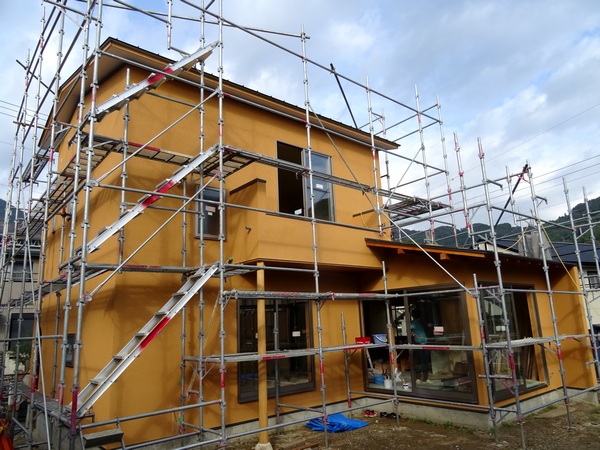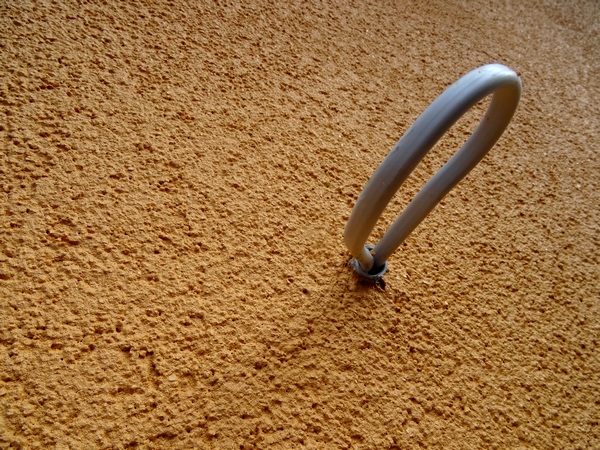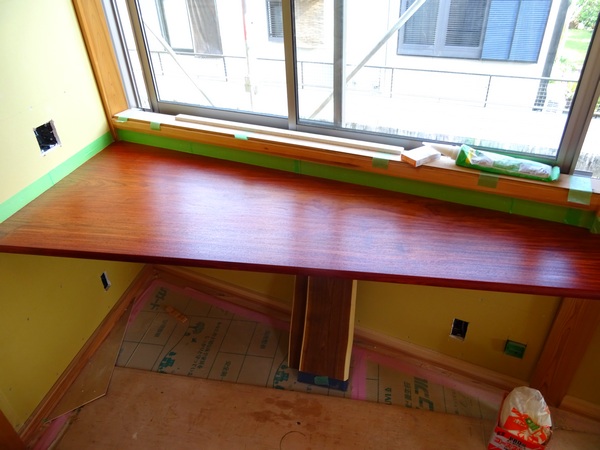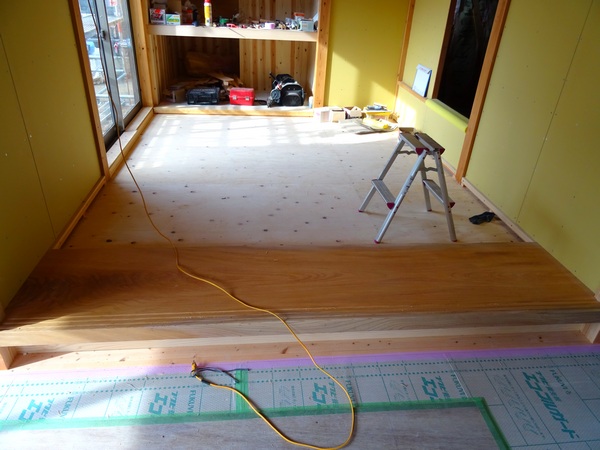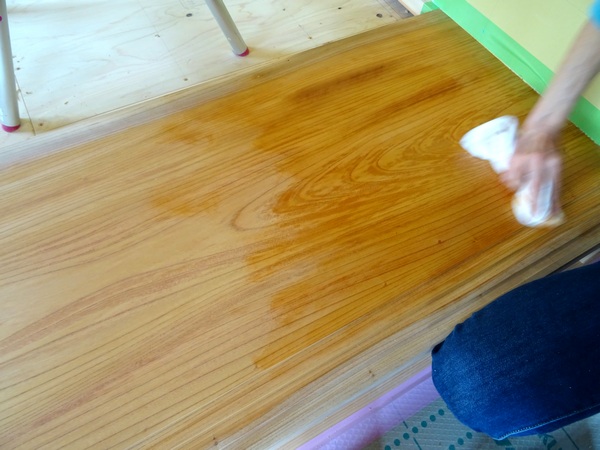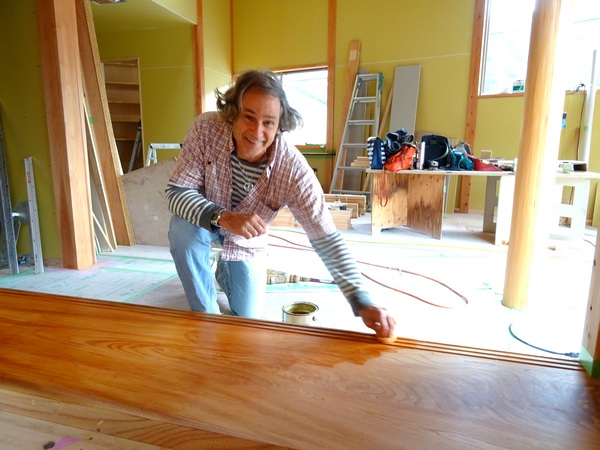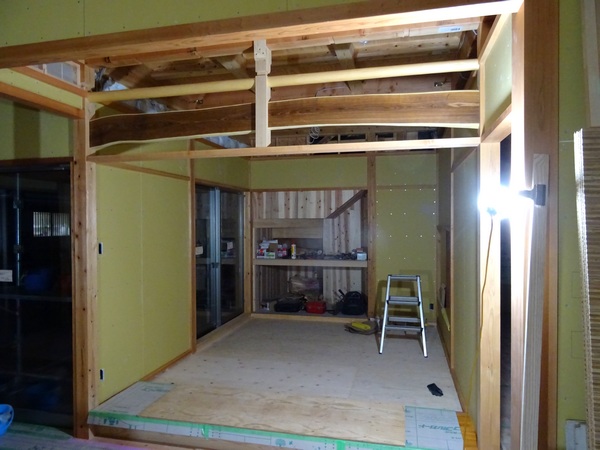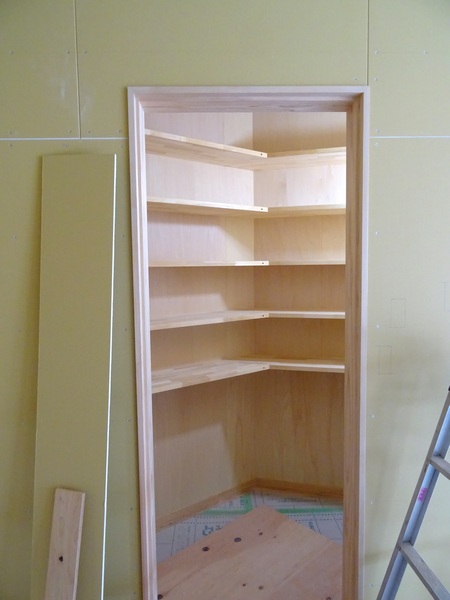The pros got the second coat on . . .
. . . the one with the roughed up texture . . . so it seemed appropriate, with the help of a Hearty Hikers buddy, to get in some Sunday painting—and Sunday waxing.
First was the karin (Chinese quince tree) desk. The wax was German-produced.
The karin shined up pretty good. The angle of the tapering desk reflects the angle of the north and east walls of the house. You’ll have to visit to feel the angles of this room—the sloping ceiling, the tapering wall.
Next, the single, big slab of keyaki (Japanese selvoka tree), that marks the border between the living room, and the tatami-mat room. The tatami mats will fill in the area that is now plywood.
It, too, shines up pretty good . . .
. . . and if the keyaki is happy, I’m happy.
Here you are looking into the tatami room again, all but the edge of the keyaki resting peacefully beneath protective cardboard and plywood. Sliding paper doors will separate this room from the living room. The horizontal piece of wood, about 180 cm from the floor, is the top rail for the sliding doors. Eventually a ceiling will go in and rest on top of the round “poles,” but except for that, everything you see above the rail will remain as it is. So even when the paper doors are closed, the space above them remains open. The darker, “crooked” pieces of wood are enju (Sophora japonica), the round pieces are whole cedar trunks of not so big trees, and the short, vertical piece in the middle is kiri (Paulownia).
I hope you like it. Because if you come to visit, this is where you’ll have to stay!
The pantry beckoned, too. Regular old painting here.
